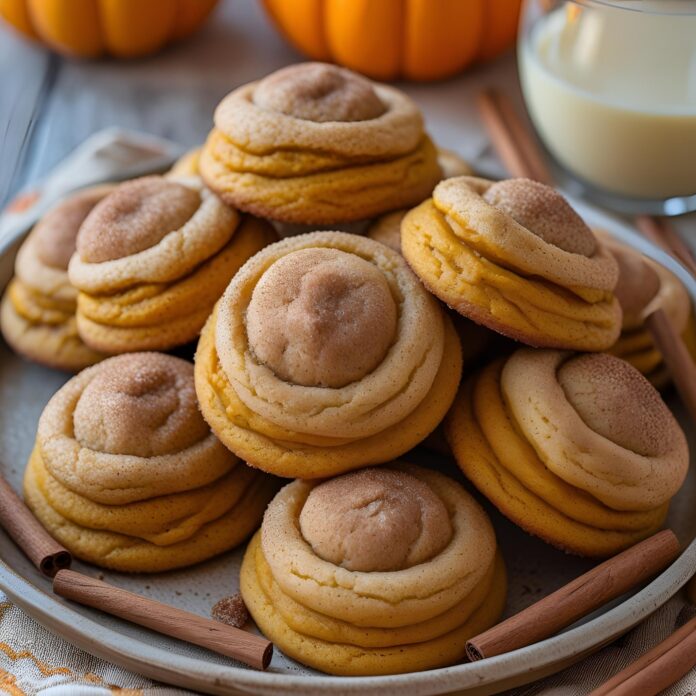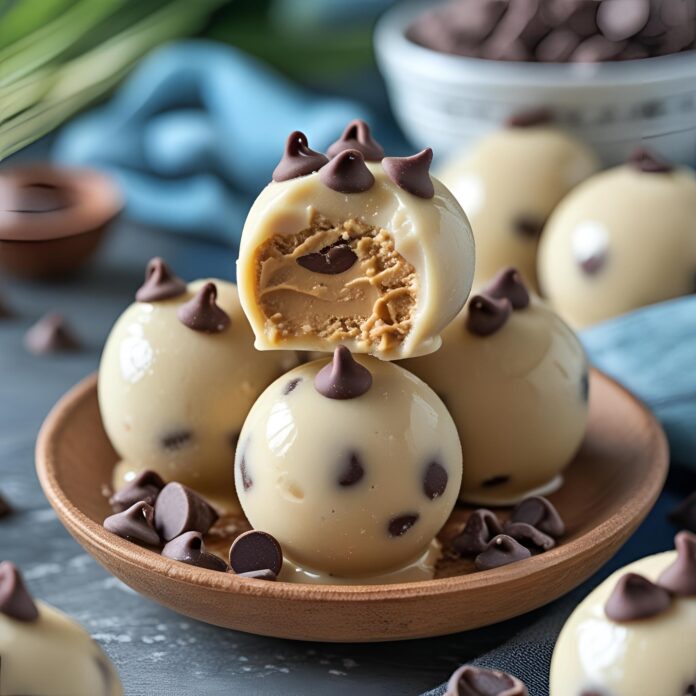Honey Mustard Baked Salmon Recipe
There are dishes that demand attention with their complexity, requiring hours in the kitchen, dozens of ingredients, and a careful eye on every detail. Then there are dishes that whisper elegance in their simplicity—recipes that come together quickly, yet deliver a refined, deeply satisfying flavor. Honey Mustard Baked Salmon falls beautifully into the latter category. It’s a dish that proves you don’t need a complicated culinary formula to create something truly memorable.

In the ever-expanding world of salmon recipes, honey mustard holds a unique place. It’s not just a glaze. It’s a harmonious blend of bold, tangy mustard with the natural sweetness of honey—a duality of flavor that perfectly complements the rich, buttery texture of baked salmon. This pairing creates a profile that is at once comforting and vibrant, hearty and refreshing. With just a few pantry staples and a high-quality cut of salmon, you can produce a main course that feels both effortless and elevated.
The origins of mustard as a condiment trace back thousands of years, with ancient Roman and Indian cuisines making use of mustard seeds for both flavor and medicinal benefits. Honey, equally historic, was prized in ancient Egypt, Greece, and China—not only as a sweetener but as a sacred, life-giving substance. Combining these two ingredients with salmon—a fish that has been central to diets and cultures from the Pacific Northwest to Scandinavia—feels not just modern and healthy, but timeless.
This recipe is not just about flavor. It’s about versatility. Honey mustard baked salmon can be weeknight-friendly or dinner-party elegant. It can be served alongside roasted vegetables for a hearty meal or flaked over salads, grain bowls, or pastas for something lighter and more casual. It’s an ideal option for meal prep, holidays, or impressing guests without overextending yourself in the kitchen.
Moreover, it’s a nutritious powerhouse. Salmon is widely celebrated for its high omega-3 content, lean protein, and array of essential nutrients, from B vitamins to selenium. Baking, as a cooking method, allows the salmon to retain moisture without the need for excessive oil or butter, making this a heart-healthy option that doesn’t sacrifice flavor. When paired with a homemade honey mustard glaze made with quality ingredients, the result is a dish that satisfies your palate and supports your well-being.
And let’s talk about the sensory experience. As the salmon bakes, the glaze caramelizes just enough to create a golden, slightly crisp finish. The aroma of warm mustard and honey mingling in the oven is both savory and sweet, inviting and comforting. When you cut into the tender fillet, the flesh should be moist, almost buttery, flaking easily under your fork. The glaze will have seeped just enough into the top layer, giving each bite a hit of flavor without overwhelming the natural taste of the fish.
In this comprehensive guide, we’ll take you through everything you need to know to master this dish—from selecting the best type of salmon and mixing your ideal glaze ratio, to achieving the perfect bake and pairing your salmon with complementary sides. You’ll also find tips for adjusting the recipe based on dietary preferences, storage guidelines for leftovers, and ideas for reinventing the dish in creative ways throughout the week.
Whether you’re a confident home cook or someone just starting to build your repertoire, this recipe is a must-have. It’s approachable yet impressive, quick yet complex in flavor. It celebrates whole ingredients and thoughtful preparation, making it suitable for both everyday meals and special occasions.
So if you’re looking for a recipe that delivers on taste, nutrition, and ease, look no further. Honey Mustard Baked Salmon is more than just dinner—it’s a lesson in how a few well-chosen ingredients can come together to create something greater than the sum of its parts. Let’s dive into the world of balanced flavors, healthy indulgence, and simple cooking done exceptionally well.
Step-by-Step Instructions: How to Make Honey Mustard Baked Salmon
Ingredients You’ll Need
For the Salmon:
-
4 salmon fillets (6 oz each), skin-on or skinless
-
1 tablespoon olive oil (plus more for greasing the pan)
-
Salt, to taste
-
Freshly ground black pepper, to taste
-
Optional: lemon slices, fresh herbs (thyme, parsley, or dill) for garnish
For the Honey Mustard Glaze:
-
¼ cup Dijon mustard
-
2 tablespoons whole grain mustard (optional, for texture)
-
¼ cup honey (raw or pasteurized, depending on preference)
-
1 tablespoon fresh lemon juice (or apple cider vinegar for a sharper kick)
-
2 teaspoons olive oil (or melted butter for a richer flavor)
-
1 small garlic clove, finely minced or grated
-
¼ teaspoon paprika (optional, for warmth and color)
Step 1: Preheat the Oven
Set your oven to 400°F (200°C). This is the ideal temperature to cook salmon thoroughly without drying it out, while also allowing the glaze to caramelize slightly and develop flavor.
Tip: Make sure your oven is fully preheated before placing the salmon in. An oven thermometer can help ensure accuracy, especially if your appliance tends to run hot or cold.
Step 2: Prepare the Baking Dish or Sheet
Lightly grease a baking dish or sheet pan with a drizzle of olive oil or line it with parchment paper for easy cleanup.
Why it matters: A greased or lined surface prevents the salmon from sticking, especially if you’re using skinless fillets. It also protects the glaze, keeping it intact for beautiful presentation and full flavor.
Optional Tip: If using a sheet pan and baking multiple portions, you can add sliced lemon or a bed of herbs underneath the salmon to infuse subtle aromatics.
Step 3: Pat the Salmon Dry
Place your salmon fillets skin-side down (if using skin-on) on a plate or cutting board and gently pat them dry with paper towels.
Why this step is essential: Removing surface moisture ensures the glaze adheres better and helps the salmon develop a nicer texture during baking. Excess moisture can dilute the flavor and create steam, which inhibits browning.
Step 4: Season the Salmon
Lightly drizzle each fillet with a bit of olive oil and use your hands or a brush to coat the top and sides. Season each piece with a generous pinch of salt and a few cracks of freshly ground black pepper.
Optional Seasoning Enhancements:
-
A light dusting of garlic powder or onion powder
-
Crushed red pepper flakes for subtle heat
-
A pinch of lemon zest for brightness
These extras can enhance the flavor if you’re customizing the dish to your taste.
Step 5: Mix the Honey Mustard Glaze
In a small bowl, whisk together the following ingredients until smooth and well blended:
-
¼ cup Dijon mustard
-
2 tablespoons whole grain mustard (optional)
-
¼ cup honey
-
1 tablespoon lemon juice
-
2 teaspoons olive oil
-
1 minced garlic clove
-
¼ teaspoon paprika (optional)
Taste the glaze and adjust as needed. If it’s too tangy, add a touch more honey. Too sweet? Add a splash more mustard or a drop of vinegar.
Why this glaze works: The balance of sweetness from the honey, acidity from the mustard and lemon juice, and savory depth from garlic and olive oil creates a flavor that pairs perfectly with the richness of salmon.
Step 6: Glaze the Salmon
Using a spoon or pastry brush, generously coat the top of each salmon fillet with the honey mustard glaze. Make sure to apply an even layer, covering the top and sides, but don’t coat the bottom (especially if the skin is on).
Tip: Reserve a small amount of glaze (1–2 tablespoons) to brush on just before serving, especially if you want a glossy, freshly flavored finish.
Step 7: Bake the Salmon
Transfer the salmon to your prepared baking dish or sheet pan. Place the pan in the preheated oven and bake for 15–20 minutes, depending on the thickness of your fillets.
-
Standard guideline: Bake for about 10 minutes per inch of thickness, measured at the thickest part of the fillet.
-
For thin fillets (½–¾ inch), check at 12–14 minutes.
-
For thicker fillets (1 inch or more), bake closer to 18–20 minutes.
Check for doneness:
-
The salmon should flake easily with a fork.
-
The internal temperature should reach 125–130°F (52–54°C) for medium and up to 145°F (63°C) if you prefer it well-done.
-
The flesh will change from translucent to opaque as it cooks.
Step 8: Broil (Optional, for Caramelization)
If you’d like a more golden, slightly caramelized finish on the glaze, switch the oven to broil during the last 1–2 minutes of cooking. Keep a close eye on it—sugars in the honey can burn quickly.
Caution: Don’t walk away during broiling. A few seconds can make the difference between perfect caramelization and an overcooked glaze.
Step 9: Rest the Salmon Briefly
Once baked, remove the salmon from the oven and let it rest for 3–5 minutes. This allows the juices to redistribute and ensures a tender, moist result.
During this time, you can reheat and brush on the reserved glaze if desired, or garnish the salmon with:
-
Fresh chopped herbs (parsley, dill, or chives)
-
Thin lemon slices or wedges for squeezing
-
A light dusting of flaky sea salt
Step 10: Serve
Serve your honey mustard baked salmon warm, paired with your favorite sides. This dish is incredibly versatile and complements a wide variety of accompaniments.
Some great serving ideas:
-
Roasted vegetables: carrots, Brussels sprouts, green beans
-
Whole grains: quinoa, wild rice, couscous, or farro
-
Leafy greens: spinach salad with vinaigrette or kale slaw
-
Simple starches: garlic mashed potatoes or a baked sweet potato
Presentation Tip: For a restaurant-quality plate, place a salmon fillet over a small bed of grains or greens, drizzle with extra glaze or lemon juice, and add a fresh herb sprig on top.
Honey Mustard Baked Salmon Recipe
There are dishes that demand attention with their complexity, requiring hours in the kitchen, dozens of ingredients, and a careful eye on every detail. Then there are dishes that whisper elegance in their simplicity—recipes that come together quickly, yet deliver a refined, deeply satisfying flavor. Honey Mustard Baked Salmon falls beautifully into the latter category. It’s a dish that proves you don’t need a complicated culinary formula to create something truly memorable.
Ingredients
- 4 salmon fillets (about 6 oz each, skin-on or skinless)
- Salt and black pepper, to taste
- 2 tbsp Dijon mustard
- 1 tbsp whole grain mustard (optional for texture)
- 2 tbsp honey
- 1 tbsp olive oil or melted butter
- 1 clove garlic, minced (optional)
- 1 tbsp lemon juice or apple cider vinegar
- Fresh parsley or dill (optional, for garnish)
- Lemon wedges (for serving)
Instructions
- Preheat oven:
Preheat your oven to 400°F (200°C). Line a baking sheet with parchment paper or lightly grease it. - Make the honey mustard sauce:
In a small bowl, whisk together Dijon mustard, whole grain mustard (if using), honey, olive oil, garlic, and lemon juice. - Season the salmon:
Place the salmon fillets skin-side down on the prepared baking sheet. Pat dry with paper towels. Season lightly with salt and pepper. - Add the sauce:
Spoon or brush the honey mustard mixture generously over the top of each fillet. - Bake:
Bake in the preheated oven for 12–15 minutes, or until the salmon flakes easily with a fork (internal temp should reach 125–130°F for medium). - Garnish and serve:
Sprinkle with chopped fresh parsley or dill if desired. Serve with lemon wedges.
Notes
- Cooking time may vary depending on the thickness of your fillets. Thicker cuts may need closer to 15 minutes.
- No whole grain mustard? You can use all Dijon or add a little yellow mustard for variety.
- Meal pairing ideas: Serve with roasted veggies, steamed rice, quinoa, or a green salad.



